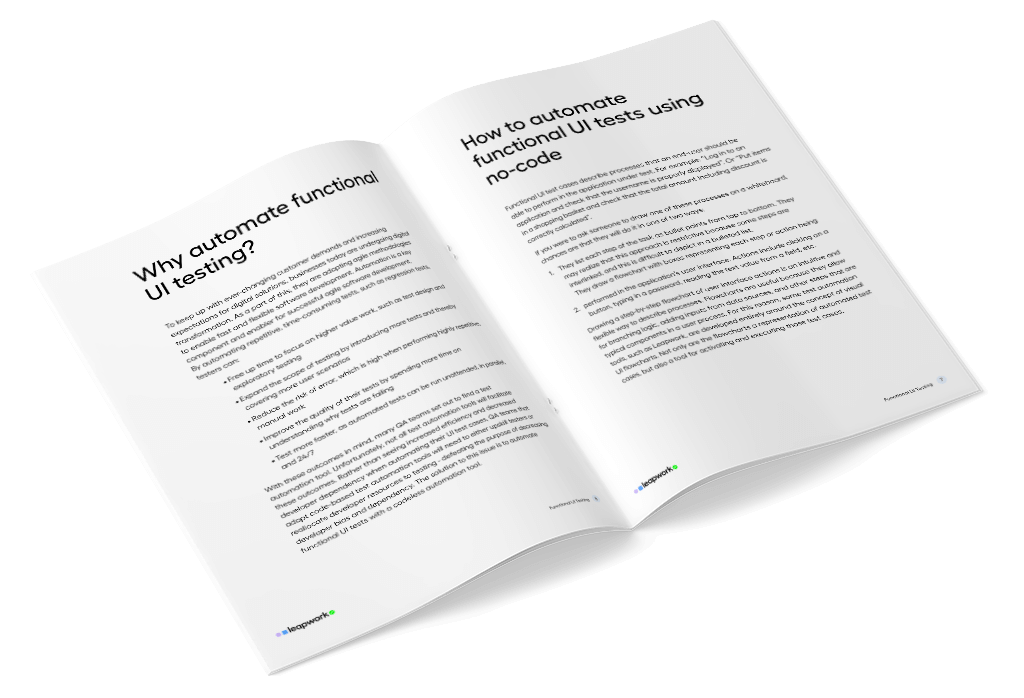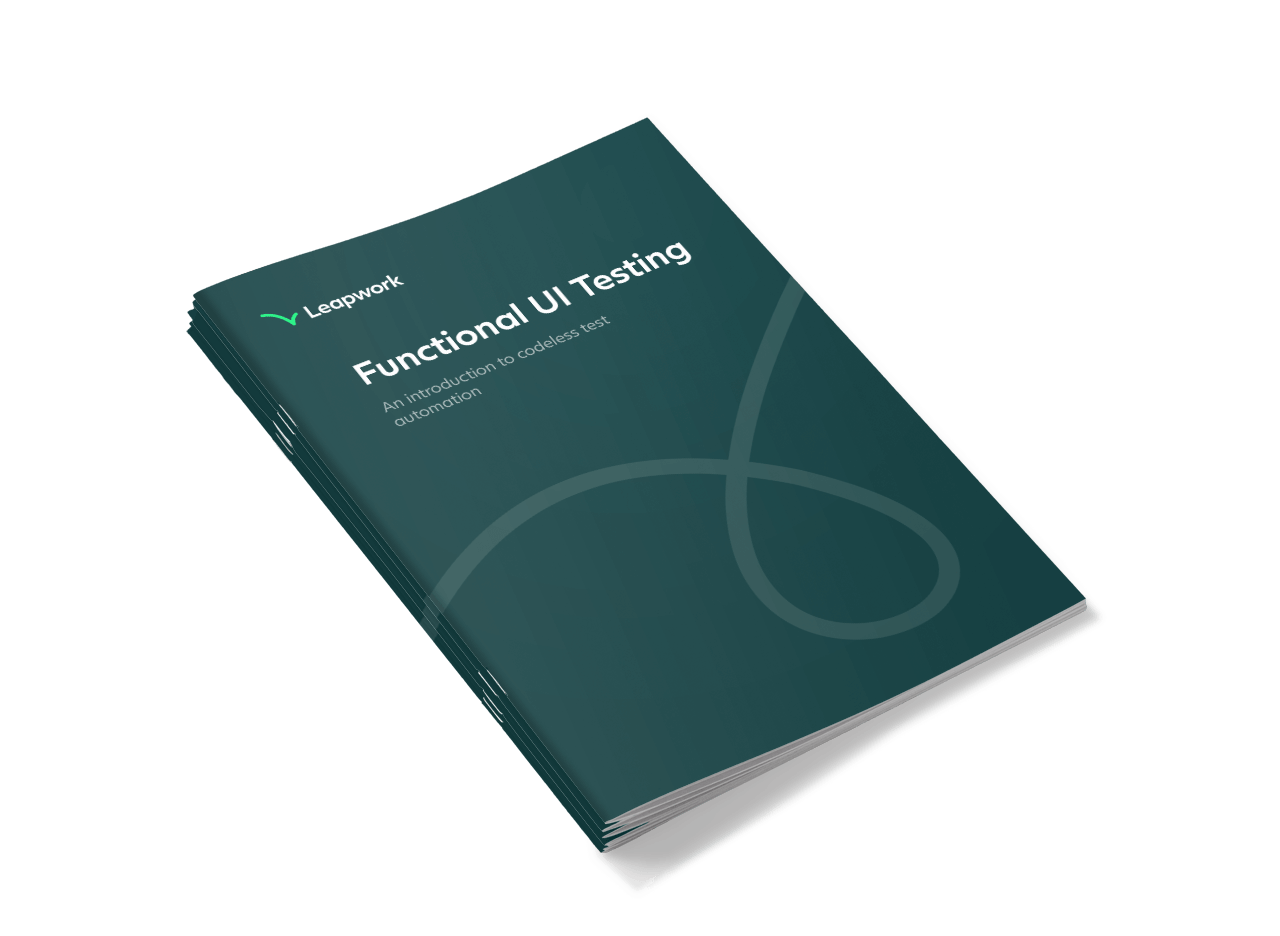
Summary: In order to catch bugs as quickly as possible, testers must continuously run functional UI tests. If performed manually, these become time-consuming and exposed to human error.
In this whitepaper, we will outline why you should automate your functional UI tests using a codeless automation tool in order to manage your resources more efficiently and allow testers to take back full ownership of the testing process.
![]() The basics of functional testing
The basics of functional testing
![]() The Test Automation Paradox
The Test Automation Paradox
![]() Codeless functional UI testing
Codeless functional UI testing
![]() Agile automation
Agile automation


©2024, Leapwork. All rights reserved.